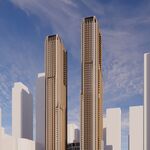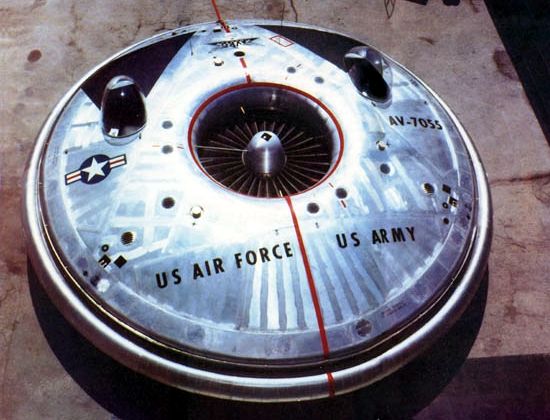B
bizorky
Guest
A full-size replica of the Avro Arrow has been completed and rolled out at the Toronto Aerospace Museum. We often discuss the need for promoting unique cultural venues in Toronto, and this one is a diamond in the rough. The first mass manufacturing of aircraft in Canada took place Toronto in 1914. Since then, some of the most noteworthy Canadian aircraft have been manufactured in this city - including the Arrow.
The Arrow is on a roll, again
Eight years in the making, a replica of beloved, doomed jet to be unveiled today
Sep. 28, 2006. 03:32 AM
SCOTT SIMMIE
FEATURE WRITER
With heat waves shimmering off the runway at Downsview airport, it looked almost like a mirage — a ghost.
But as the sleek lines of the aircraft being towed from a Bombardier hangar to the Toronto Aerospace Museum emerged on a recent day, it became clear this was no illusion. There, its distinctive delta wing swept back, was a full-scale replica of likely the most celebrated and controversial aircraft in Canadian history: the Avro Arrow.
Though this CF-105 will never fly, it looks astonishingly fast. Nimble. Real.
For Peter Allnutt, 73, seeing the freshly painted craft make that graceful roll was truly a déjà vu moment. Though he's spent much of the past five years working with other volunteers on this museum-quality replica, his connection with the Arrow goes back a half-century. The former experimental flight mechanic for Avro Aircraft was there when the very first Arrow rolled out the hangar doors in October 1957.
And he's never forgotten.
"It was impressive — it was mind-blowing, actually, at the time," he said. "Back then, there was nothing like it in the world."
And there wasn't. On the day of that rollout, the Star quoted Avro president Fred Smye describing the jet as "the most advanced aircraft this side of the iron curtain." It wasn't hyperbole.
The interceptor was capable of flying at twice the speed of sound. New Iroquois jet engines were being developed and tested by a sister company to power future Arrows on a crucial Cold War mission: to defend North America from possible attack by Russian bombers delivering nuclear weapons over a North Pole route. In all, five Arrows were produced. And the 15,000 Avro employees had every reason to be proud of their jet and to plan for their futures.
That future did not unfold as anticipated. In September 1958, the John Diefenbaker government announced it was scaling back orders for the Arrow and its forthcoming engines. Still, it was no small surprise when Prime Minister Diefenbaker stood in the House of Commons the following February and announced the cancellation of the Arrow program — citing high costs and a diminished need for interceptors in an age of nuclear missiles. It's a day former employees and aircraft historians still call "Black Friday."
In an instant, 15,000 people were told they'd be out of work.
"The government ordered the aircraft to be chopped up, and all the photos and drawings to be destroyed," recalls Allnutt. "But it's amazing how much stuff did survive."
What survived included some original drawings and plans — and a dream that this aircraft not be forgotten. It's a vision that the Toronto Aerospace Museum in Downsview Park has had since its inception — that a full-scale Arrow model would one day grace its exhibit.
"A lot of people said this would never happen," says manager/curator Paul Cabot. "It's an eight-year overnight success."
Some 140 people volunteered to help replicate this craft — right down to the rivets and hydraulic lines. Of those, there was a small core of regulars who seemed to spend every spare hour on this project. Neil Dellandrea, whose uncle worked on the Arrow, has been involved for more than six of those years.
"I just feel really proud to be part of this thing," he said. "It's my sense of pride in Canadian achievement."
The museum will officially unveil the Arrow to the media this morning and to the public on Sunday, October 8th. There will also be a fundraising gala next Thursday (details at www.torontoaerospacemuseum.com) to celebrate this phoenix.
"It's an icon of Canadian history — it's a legend," says John Harper, the museum's education director.
"Even before it was finished, I've seen men in here with tears in their eyes."
The Arrow is on a roll, again
Eight years in the making, a replica of beloved, doomed jet to be unveiled today
Sep. 28, 2006. 03:32 AM
SCOTT SIMMIE
FEATURE WRITER
With heat waves shimmering off the runway at Downsview airport, it looked almost like a mirage — a ghost.
But as the sleek lines of the aircraft being towed from a Bombardier hangar to the Toronto Aerospace Museum emerged on a recent day, it became clear this was no illusion. There, its distinctive delta wing swept back, was a full-scale replica of likely the most celebrated and controversial aircraft in Canadian history: the Avro Arrow.
Though this CF-105 will never fly, it looks astonishingly fast. Nimble. Real.
For Peter Allnutt, 73, seeing the freshly painted craft make that graceful roll was truly a déjà vu moment. Though he's spent much of the past five years working with other volunteers on this museum-quality replica, his connection with the Arrow goes back a half-century. The former experimental flight mechanic for Avro Aircraft was there when the very first Arrow rolled out the hangar doors in October 1957.
And he's never forgotten.
"It was impressive — it was mind-blowing, actually, at the time," he said. "Back then, there was nothing like it in the world."
And there wasn't. On the day of that rollout, the Star quoted Avro president Fred Smye describing the jet as "the most advanced aircraft this side of the iron curtain." It wasn't hyperbole.
The interceptor was capable of flying at twice the speed of sound. New Iroquois jet engines were being developed and tested by a sister company to power future Arrows on a crucial Cold War mission: to defend North America from possible attack by Russian bombers delivering nuclear weapons over a North Pole route. In all, five Arrows were produced. And the 15,000 Avro employees had every reason to be proud of their jet and to plan for their futures.
That future did not unfold as anticipated. In September 1958, the John Diefenbaker government announced it was scaling back orders for the Arrow and its forthcoming engines. Still, it was no small surprise when Prime Minister Diefenbaker stood in the House of Commons the following February and announced the cancellation of the Arrow program — citing high costs and a diminished need for interceptors in an age of nuclear missiles. It's a day former employees and aircraft historians still call "Black Friday."
In an instant, 15,000 people were told they'd be out of work.
"The government ordered the aircraft to be chopped up, and all the photos and drawings to be destroyed," recalls Allnutt. "But it's amazing how much stuff did survive."
What survived included some original drawings and plans — and a dream that this aircraft not be forgotten. It's a vision that the Toronto Aerospace Museum in Downsview Park has had since its inception — that a full-scale Arrow model would one day grace its exhibit.
"A lot of people said this would never happen," says manager/curator Paul Cabot. "It's an eight-year overnight success."
Some 140 people volunteered to help replicate this craft — right down to the rivets and hydraulic lines. Of those, there was a small core of regulars who seemed to spend every spare hour on this project. Neil Dellandrea, whose uncle worked on the Arrow, has been involved for more than six of those years.
"I just feel really proud to be part of this thing," he said. "It's my sense of pride in Canadian achievement."
The museum will officially unveil the Arrow to the media this morning and to the public on Sunday, October 8th. There will also be a fundraising gala next Thursday (details at www.torontoaerospacemuseum.com) to celebrate this phoenix.
"It's an icon of Canadian history — it's a legend," says John Harper, the museum's education director.
"Even before it was finished, I've seen men in here with tears in their eyes."





